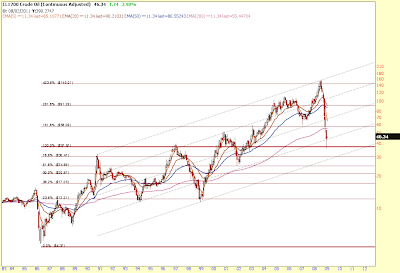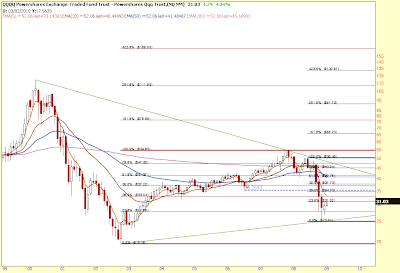5 year weekly
 I think it's pretty AMaZiNg how the multi year Fibonacci lines come in play. Pretty EZ to find a price point to trade.
I think it's pretty AMaZiNg how the multi year Fibonacci lines come in play. Pretty EZ to find a price point to trade.So here is a closer look at a
2 year daily
 Again, if you were just looking at daily charts would you have caught the pattern?
Again, if you were just looking at daily charts would you have caught the pattern?I'm going to look into some long CALLS and set some low purchase points to hopefully pick up some shares sub$45 or just above the 23.6% fib line of $43.60. Then use the $43.60 as a reference for placing stops.
EZ Money






